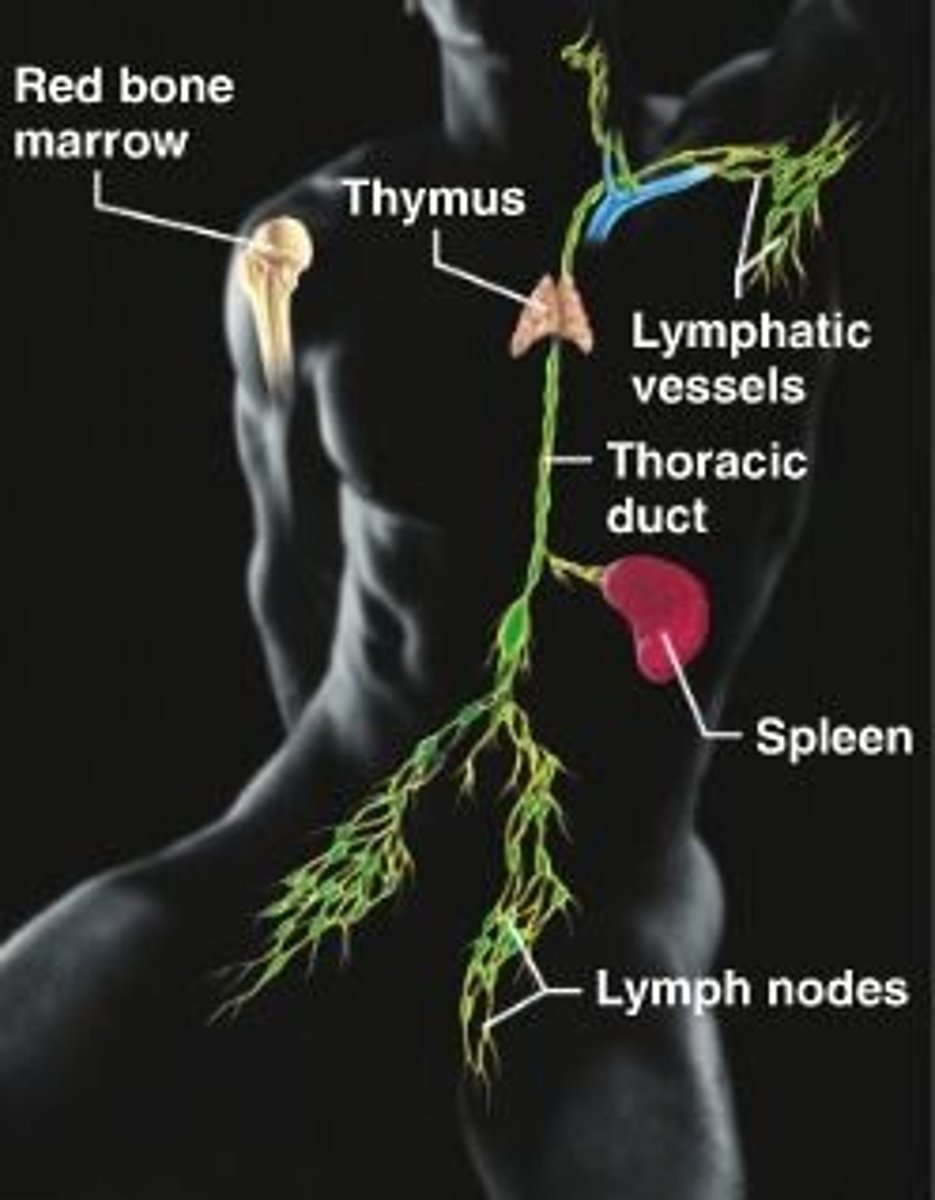Describe the anatomy and physiology of the respiratory system (TEAS7)
1/32
There's no tags or description
Looks like no tags are added yet.
Name | Mastery | Learn | Test | Matching | Spaced |
|---|
No study sessions yet.
33 Terms
respiratory system function
Bring oxygen to and eliminates carbon dioxide from the blood.
breathing (inhaling or exhaling)
The process of bringing oxygen into the lungs
ventilation
exchanging the gas oxygen with the gas carbon dioxide in the lungs
YOUTBUBE THE FLOW OF THE RESPIRATORY SYSTEM!!!!
airs enter through:
-nasal openings
-moves into nasal cavity
-travels past the pharynx (throat)
-into the trachea
-divides into right and left primary bronchi
-right bronchus continues to the right lungs
-left bronchus continues into the left lungs
-right and left bronchi subdivides into smaller tubes called bronchioles.
-bronchioles terminated in alveoli
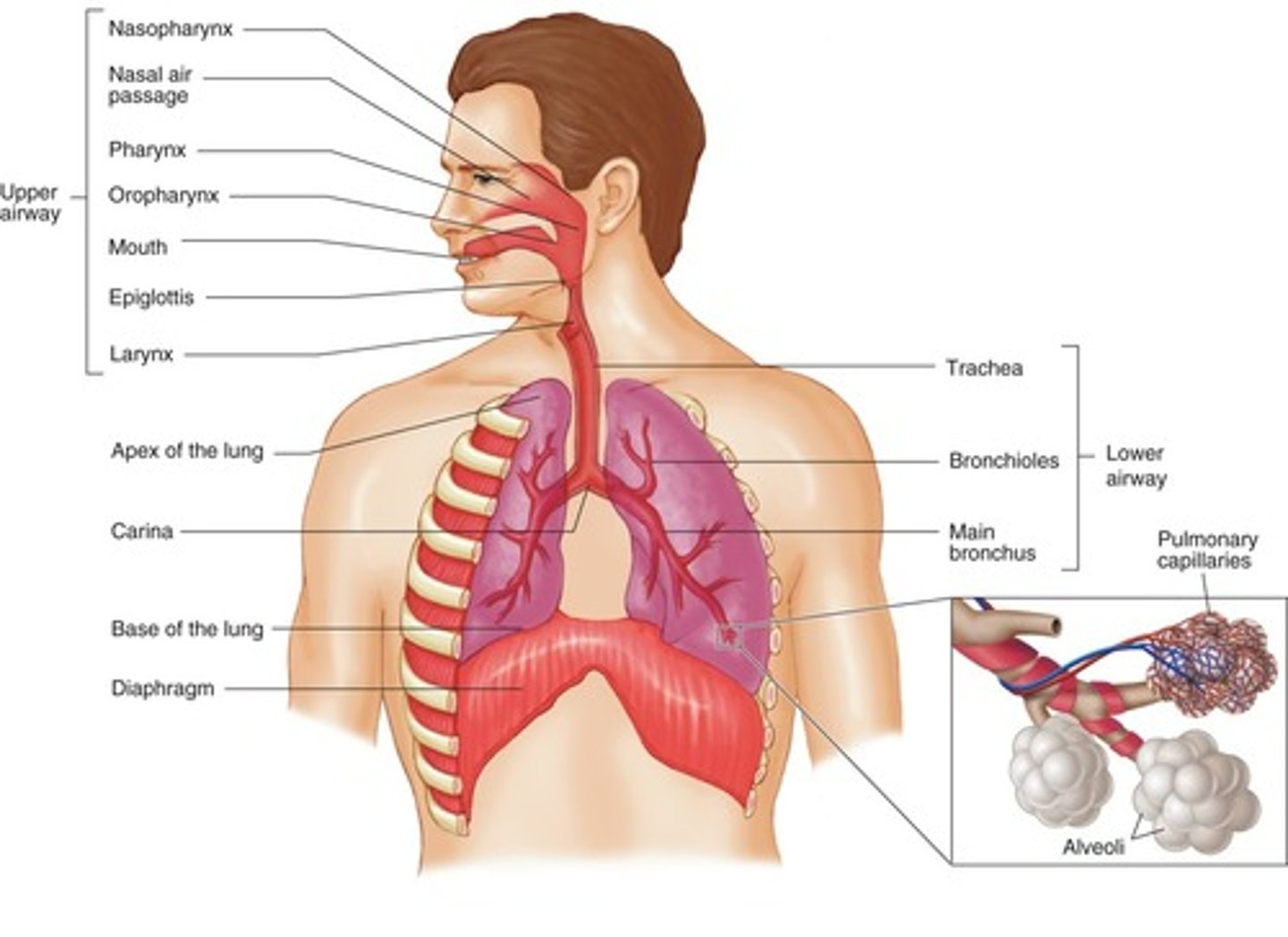
cells
The basic unit of structure and function in all living things
-basic unit of life
Alveoli
tiny sacs of lung tissue specialized for the movement of gases between air and blood
-gas exchange occurs
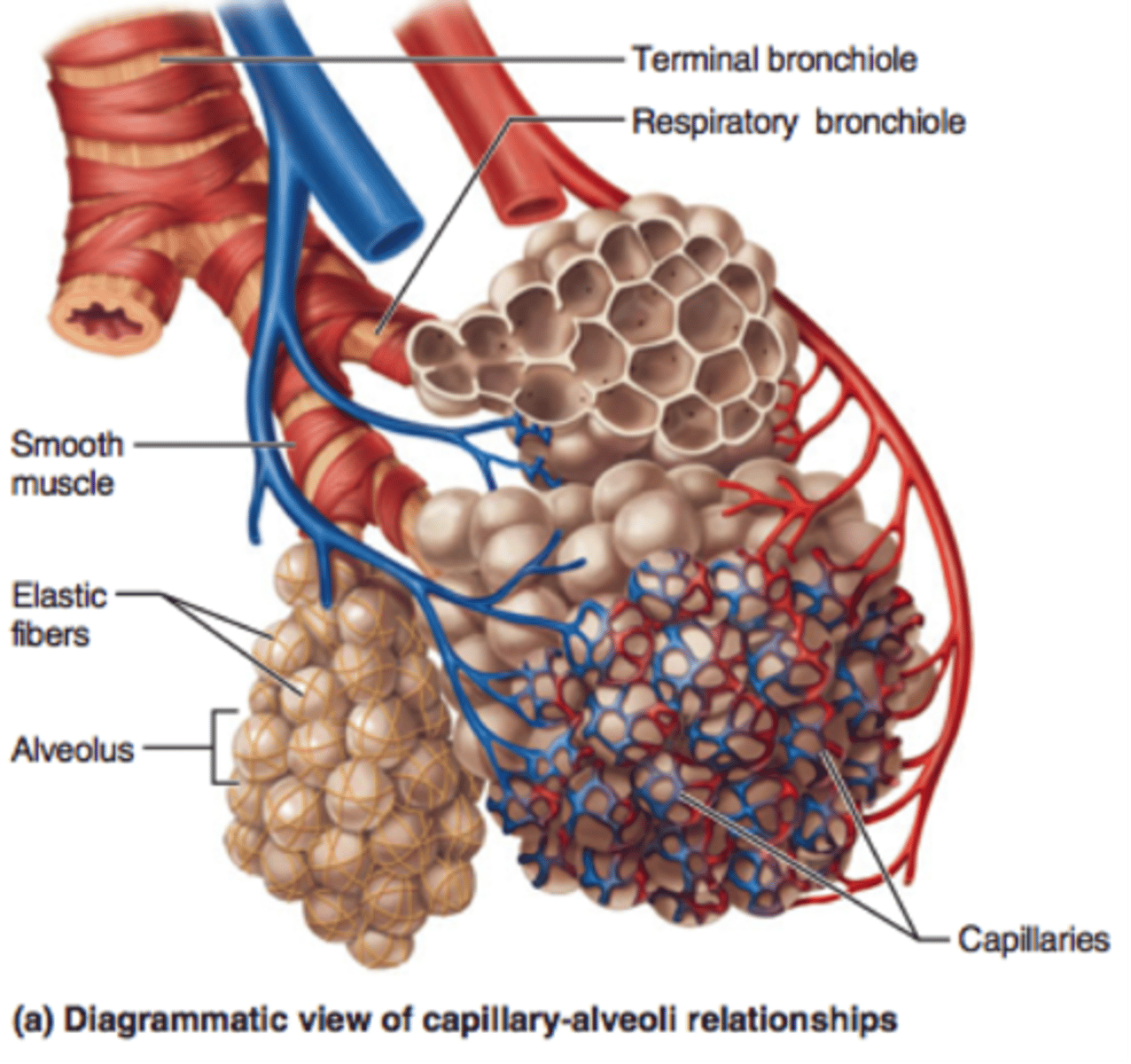
organ systems
A group of organs that work together in performing vital body functions.
Trachea (windpipe)
air passage extending from the larynx into the thorax and into the lungs
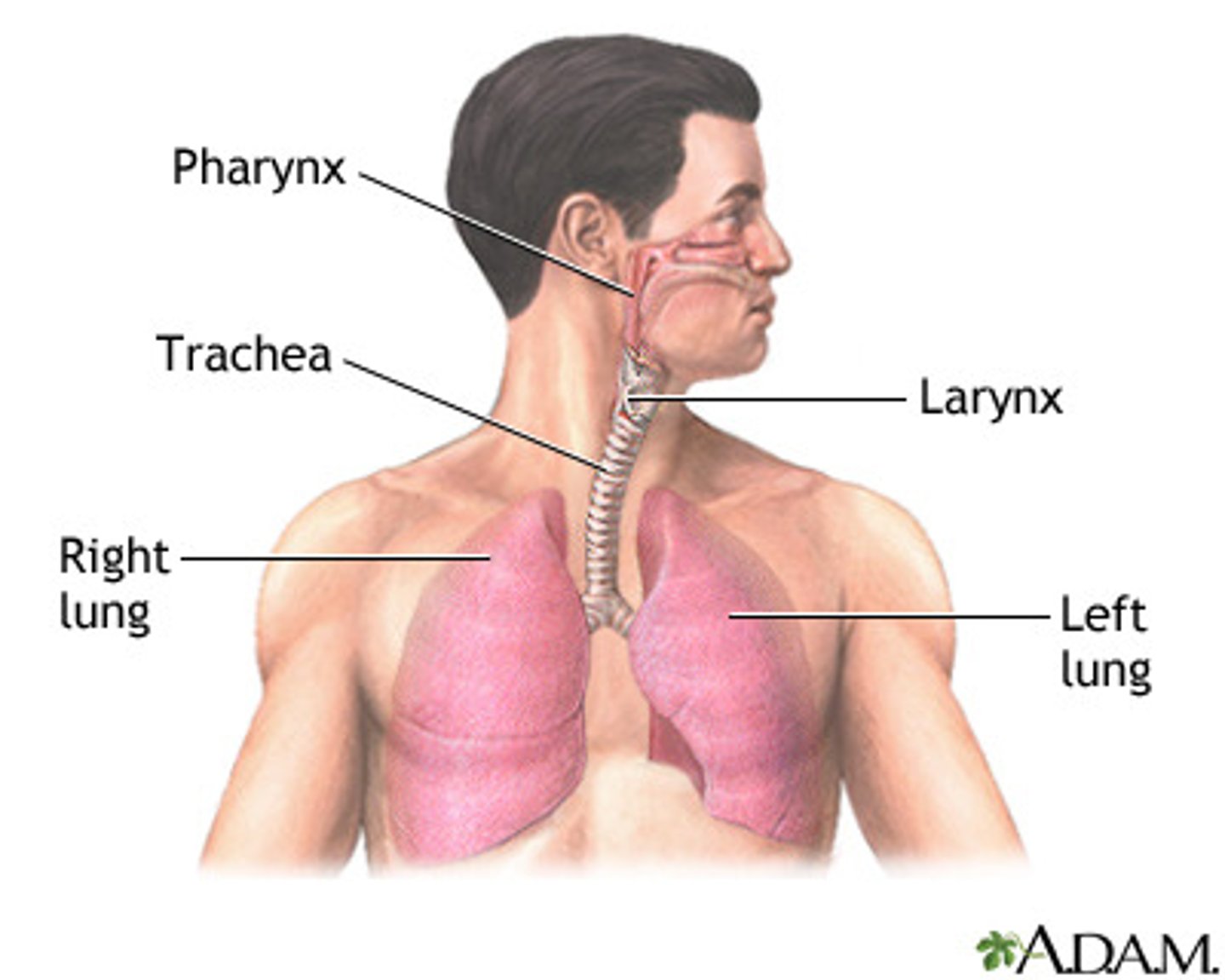
Bronchi
The passages that direct air into the lungs
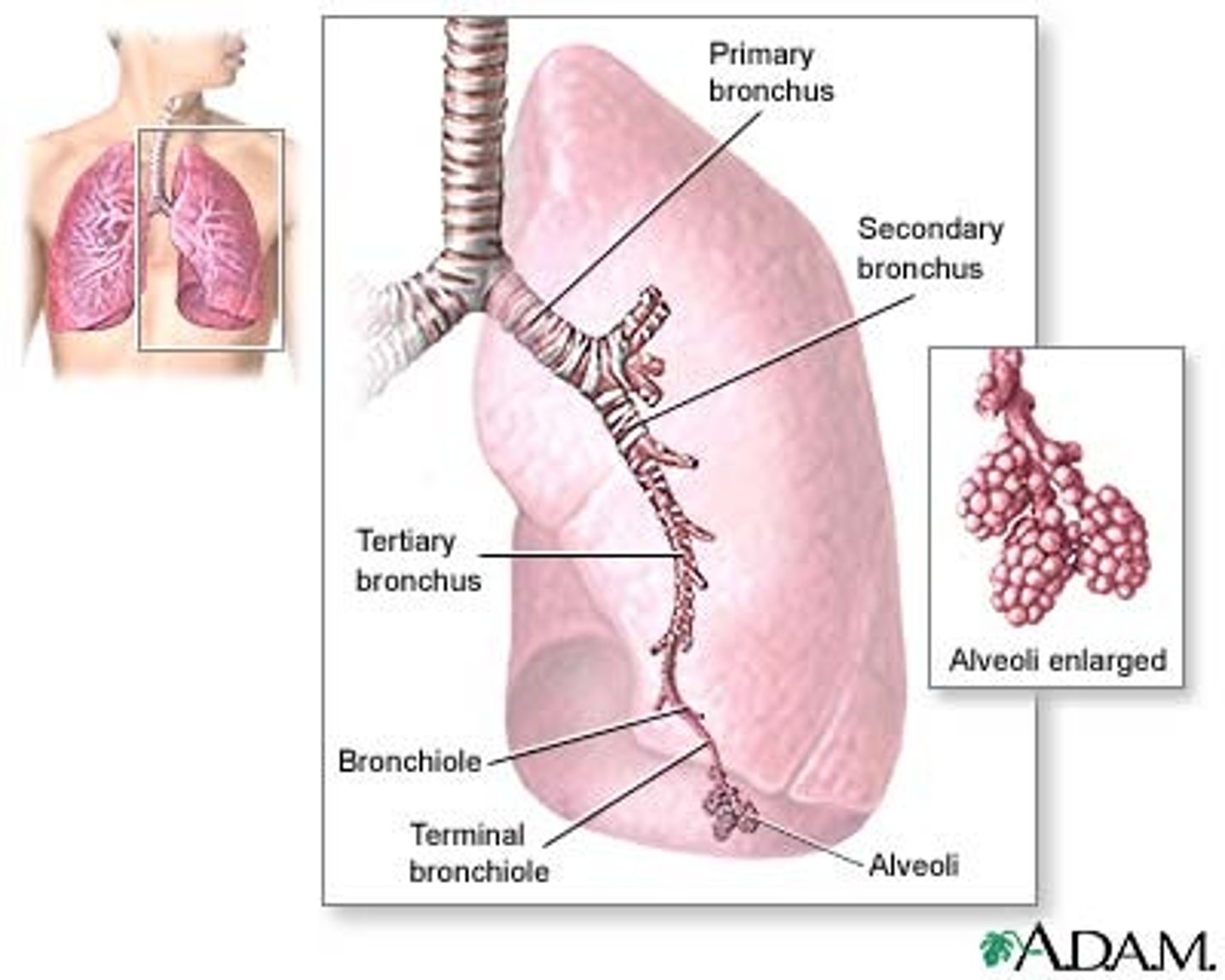
Bronchioles
Small passages in the lungs that connect bronchi to alveoli
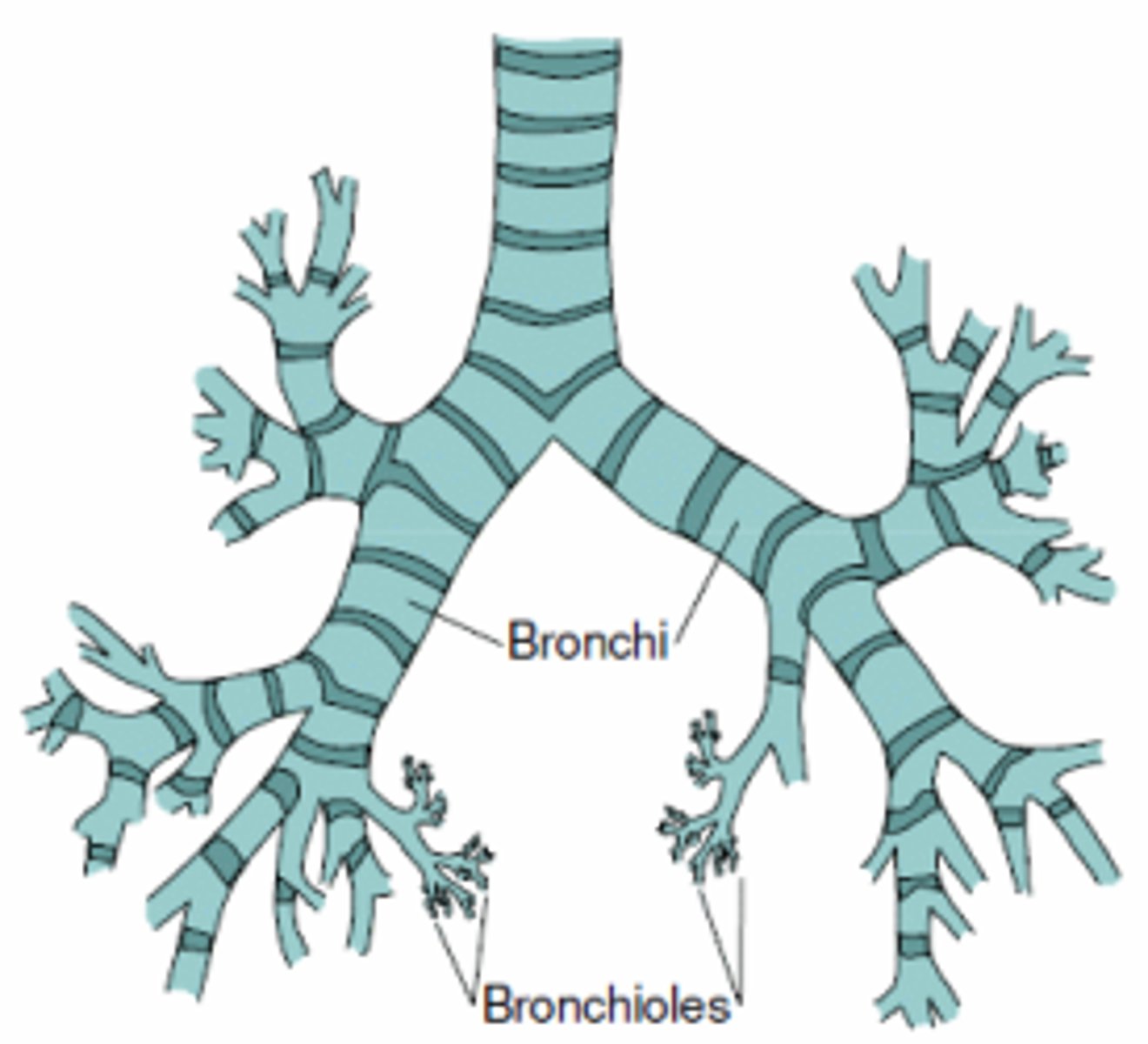
heart
muscular organ that pumps blood throughout the body
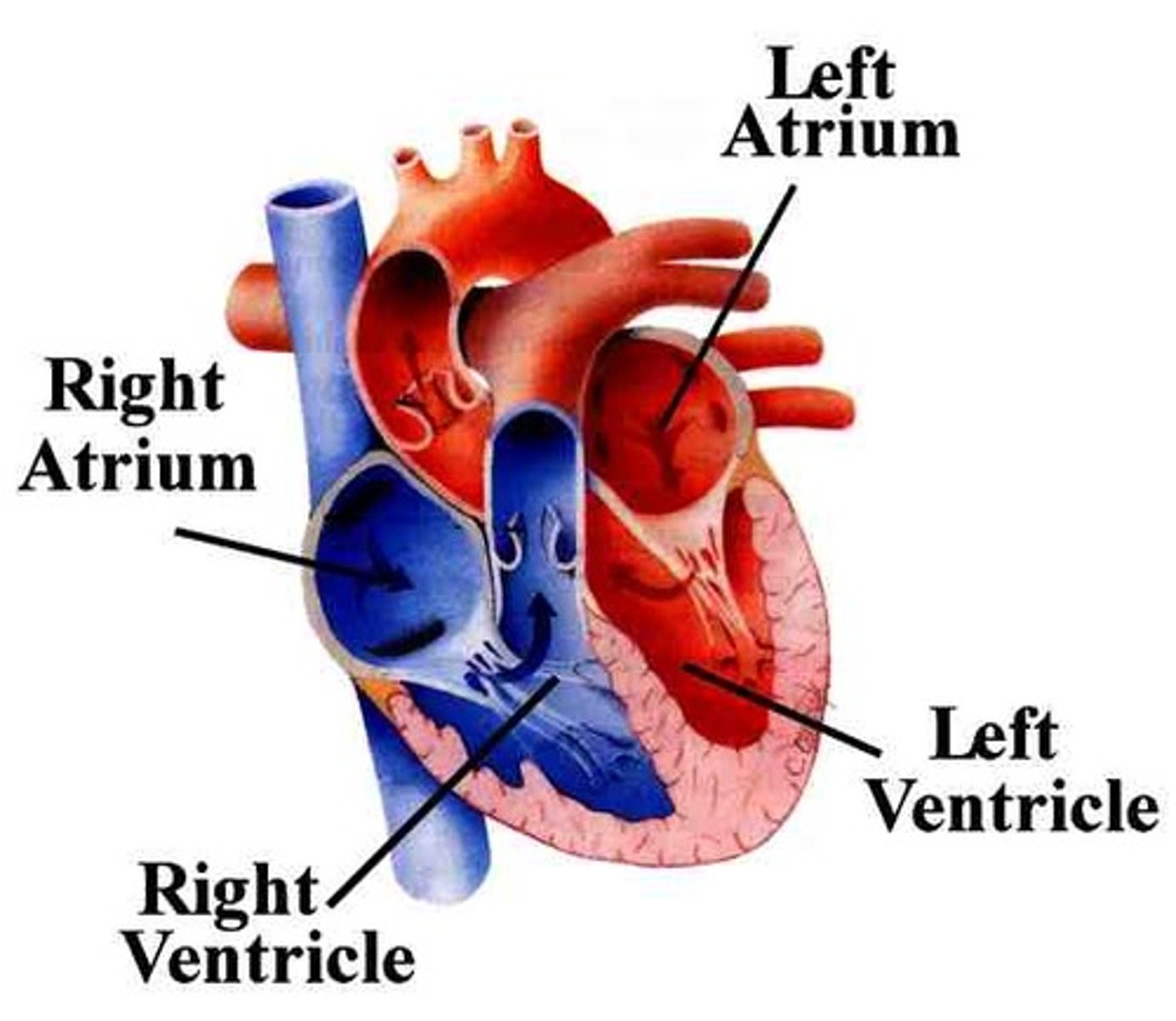
mediastium
area between the lungs
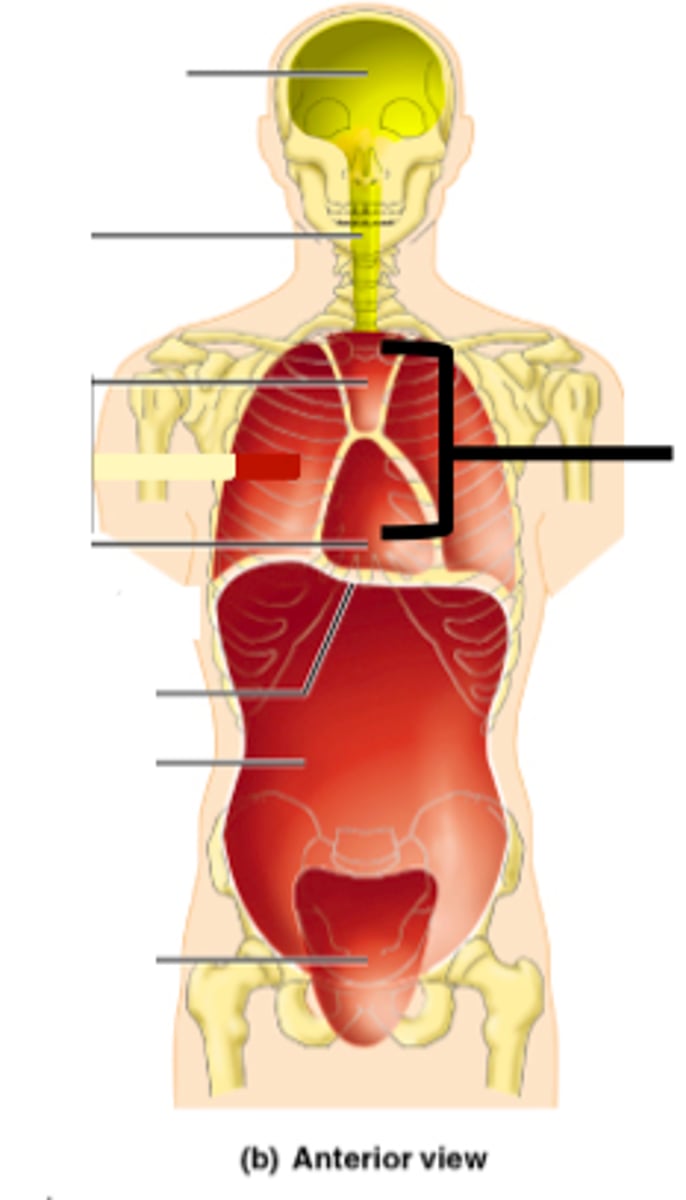
pleura
Membrane surrounding the lungs and inside the chest cavity

Capillaries
Small blood vessels that connect smaller arteries, called arterioles, to smaller veins, called venules, and carry out gas exchange
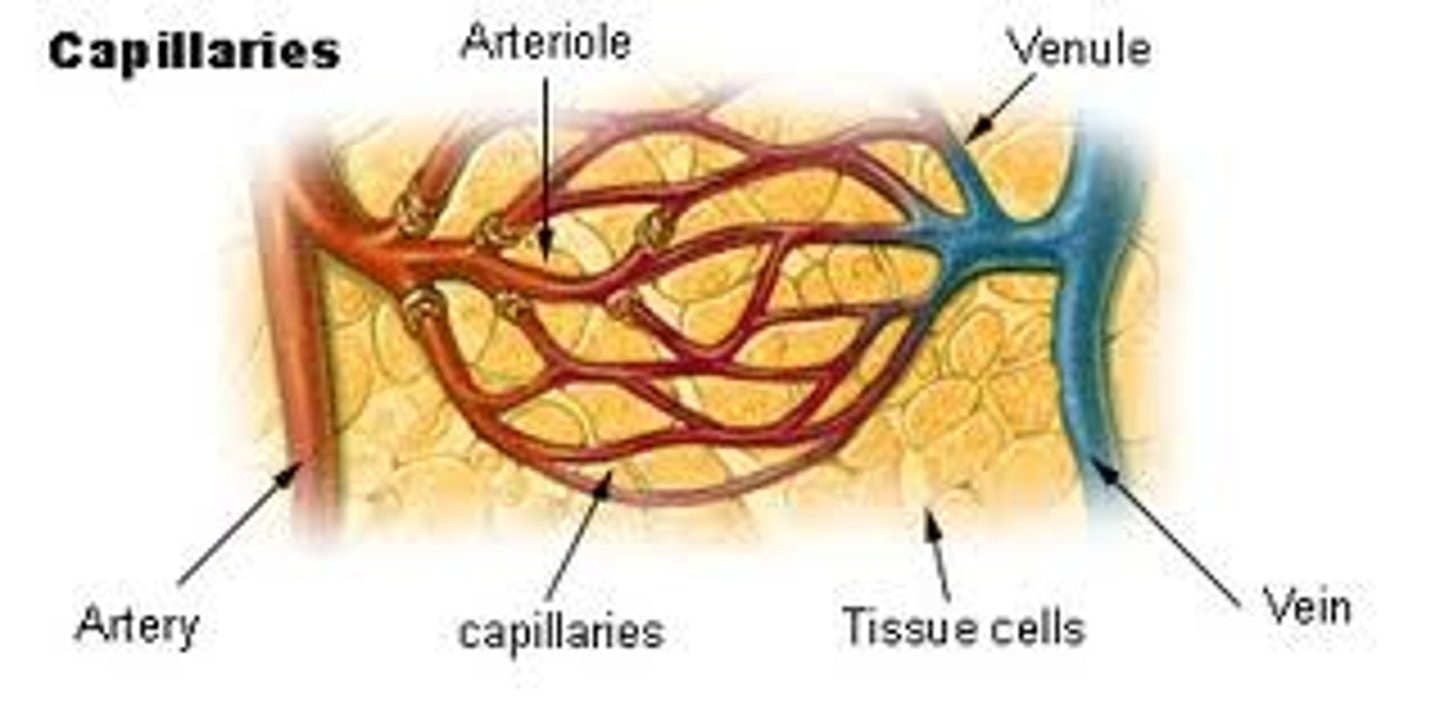
arterioles
smallest arteries
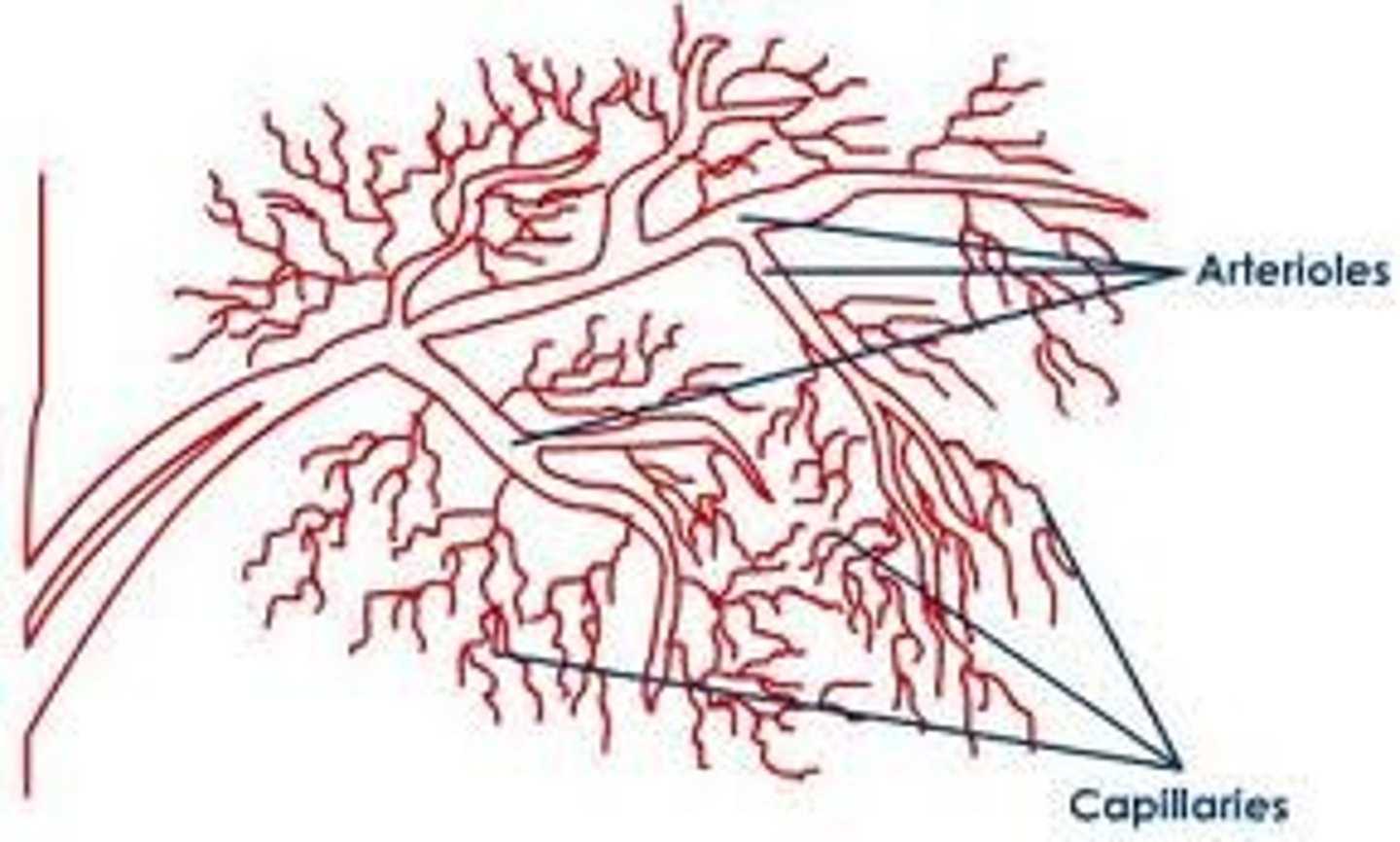
venules
small veins
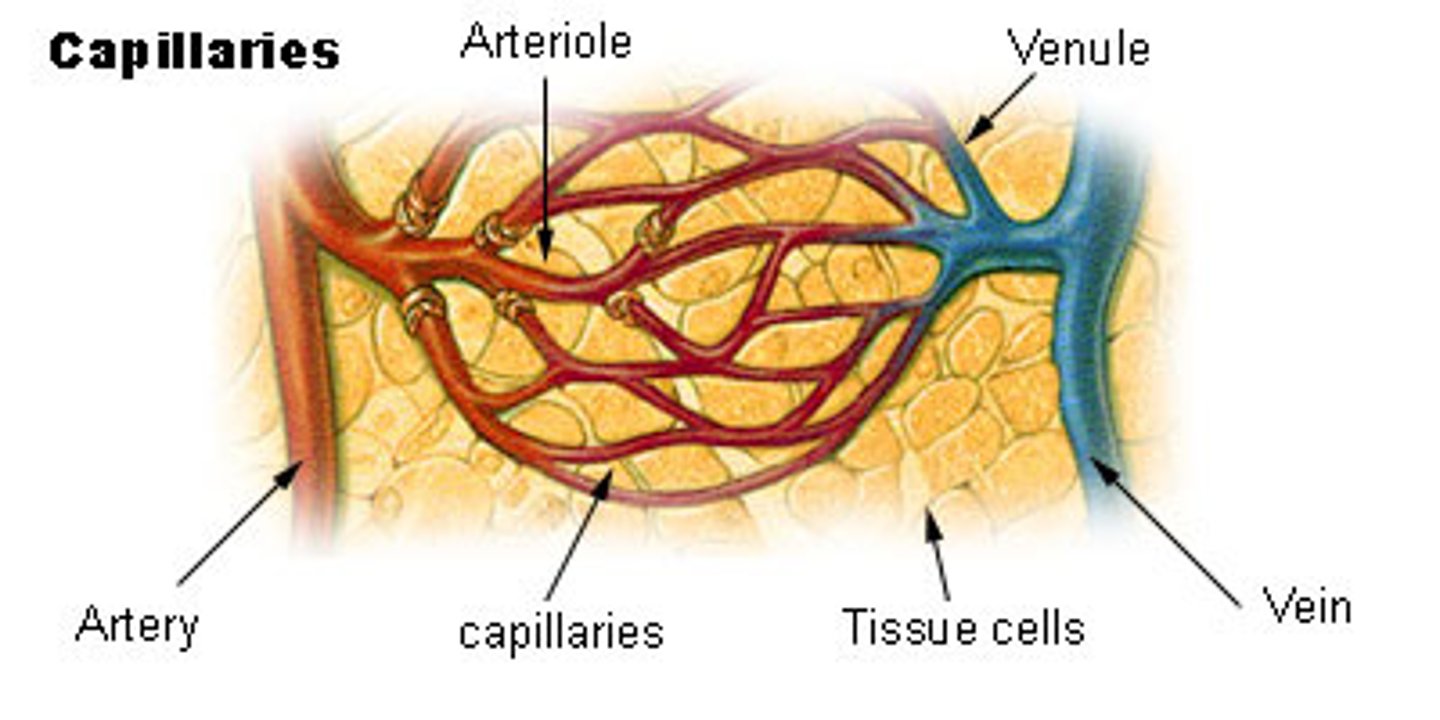
diffusion
the process by which molecules move from an area of higher concentration to an area of lower concentration
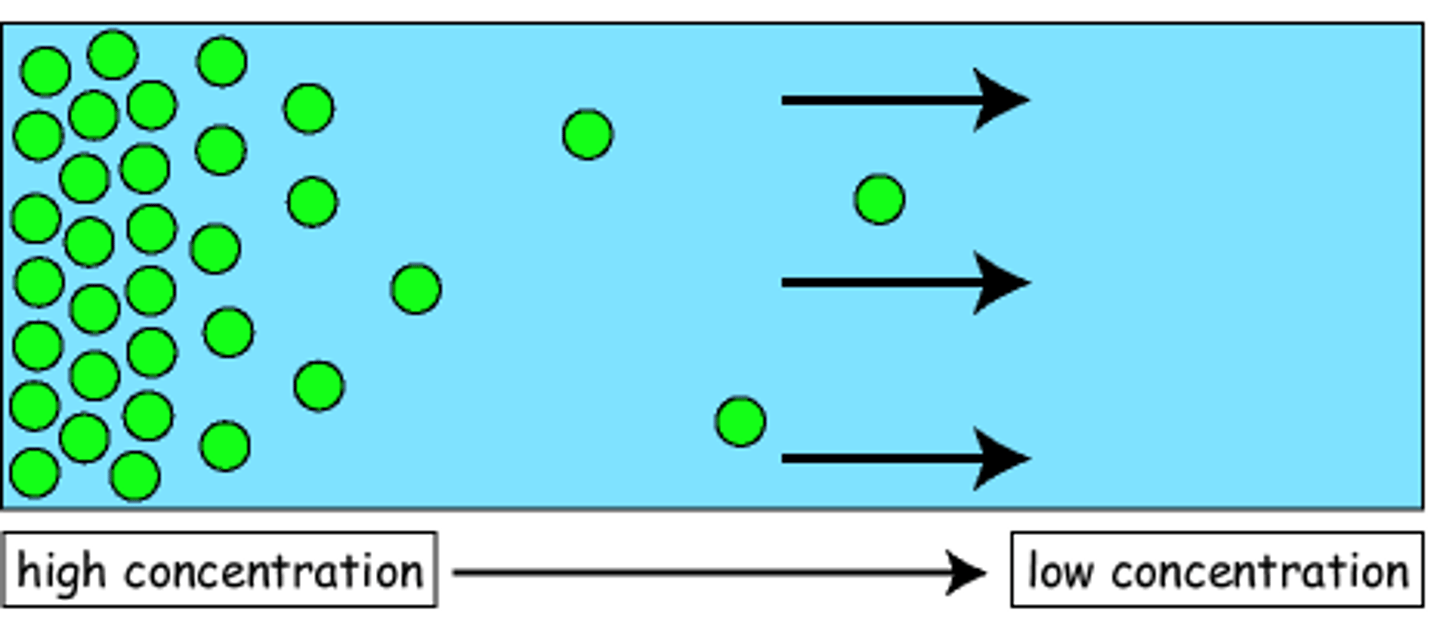
passive transport
The movement of materials through a cell membrane without using energy
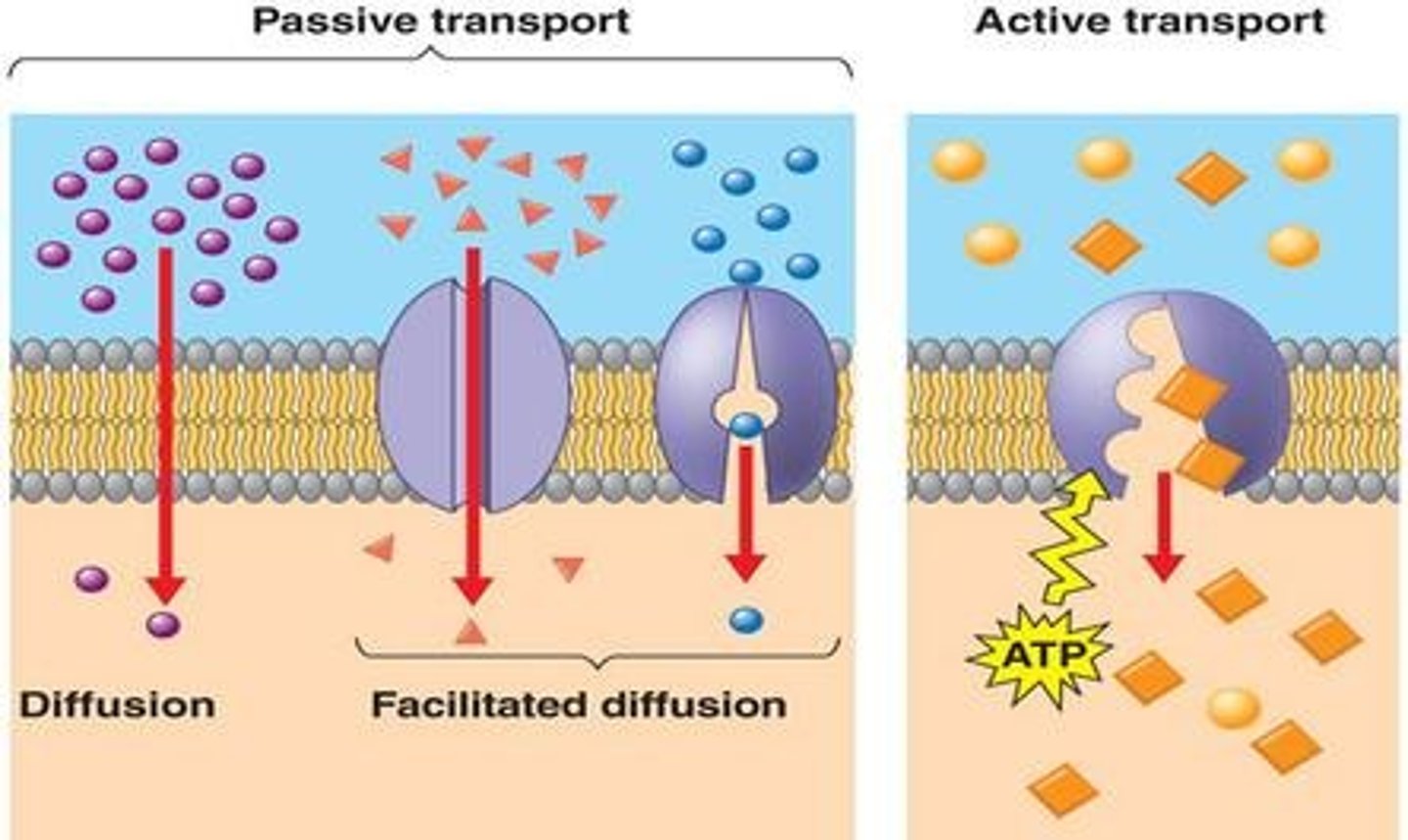
YOUTUBE GAS EXCHANGE
YOUTUBE
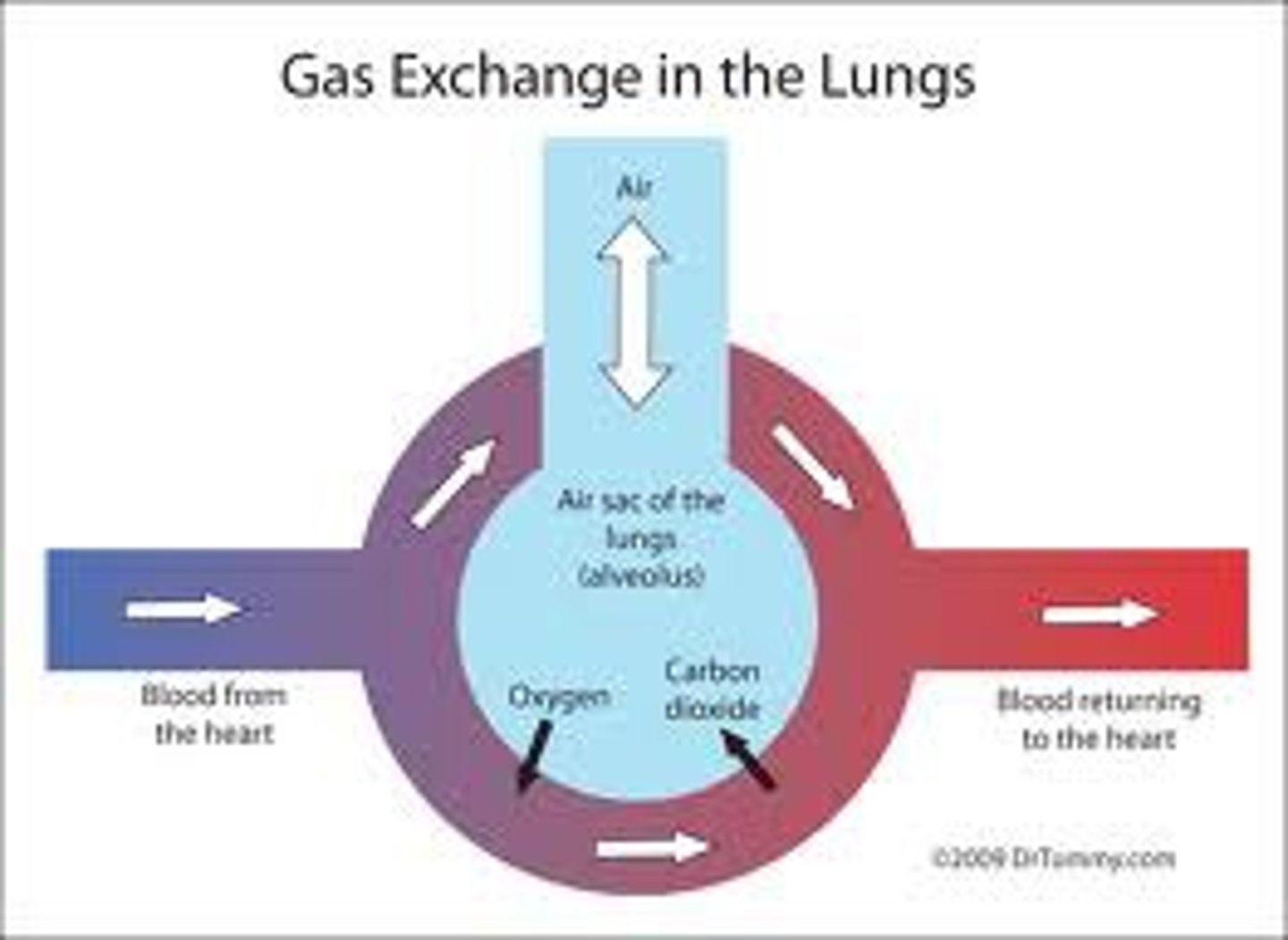
right lung
3 lobes (superior, middle, inferior)
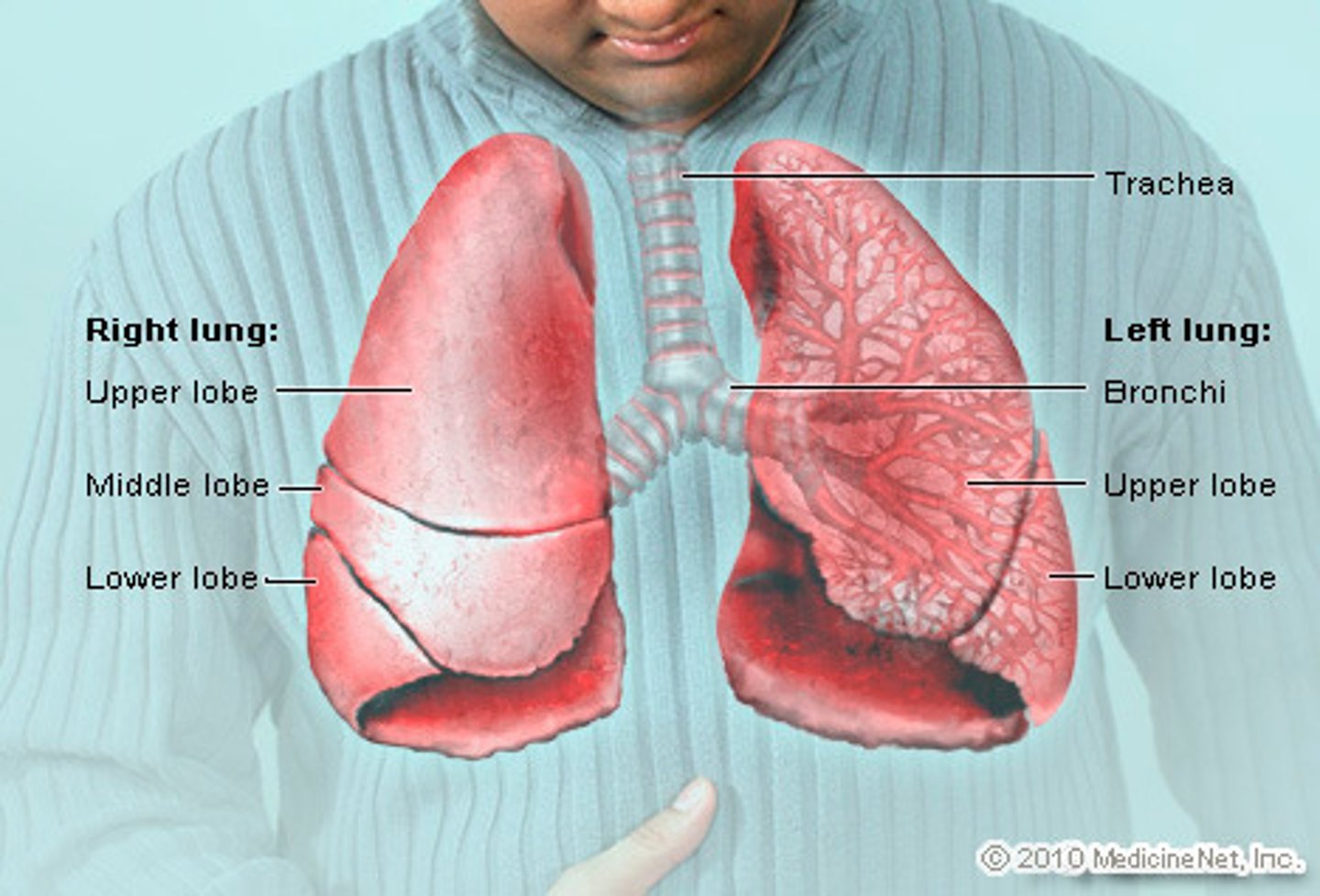
left lung
2 lobes: superior and inferior
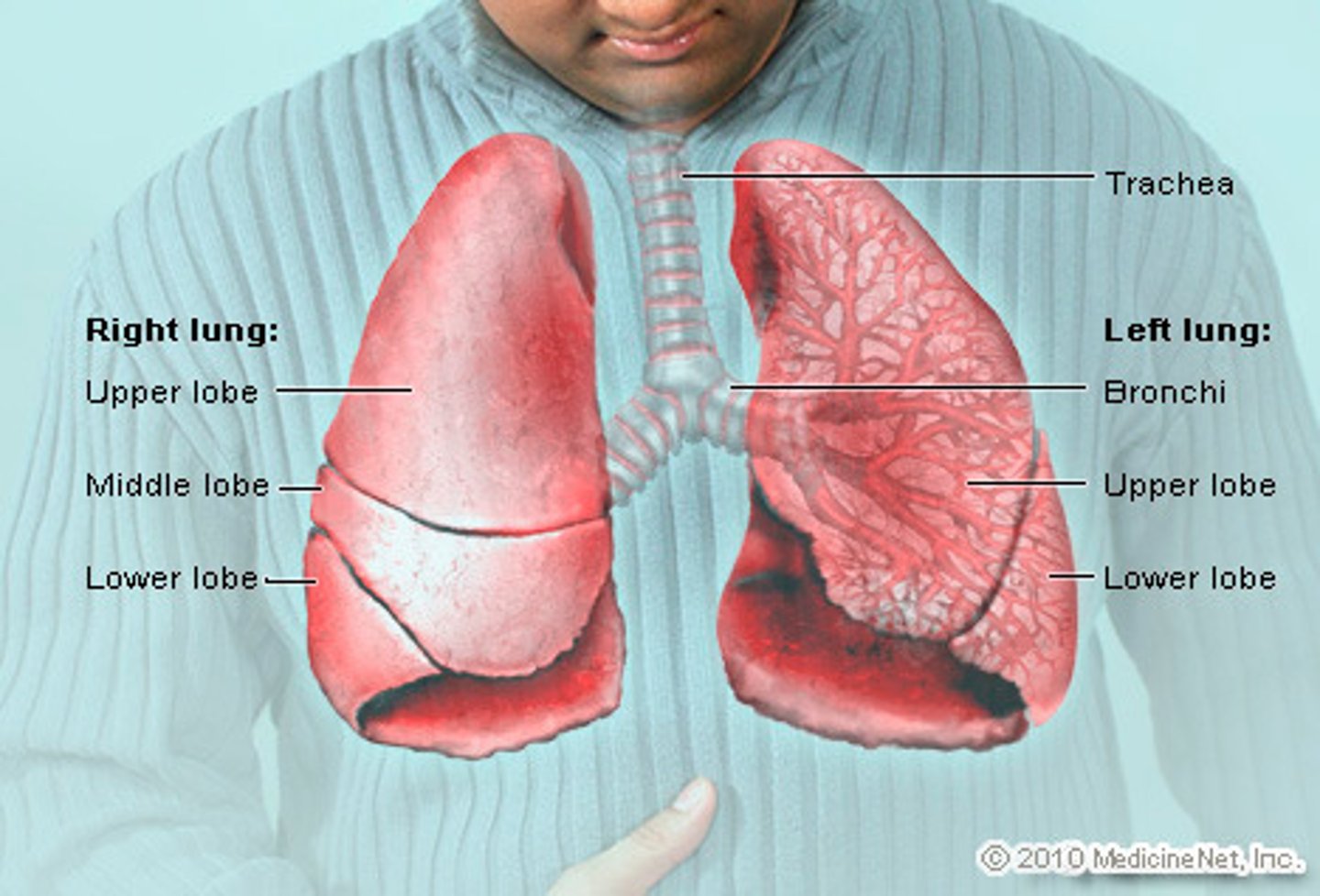
heart location
mediastinum, between lungs mainly on the left side
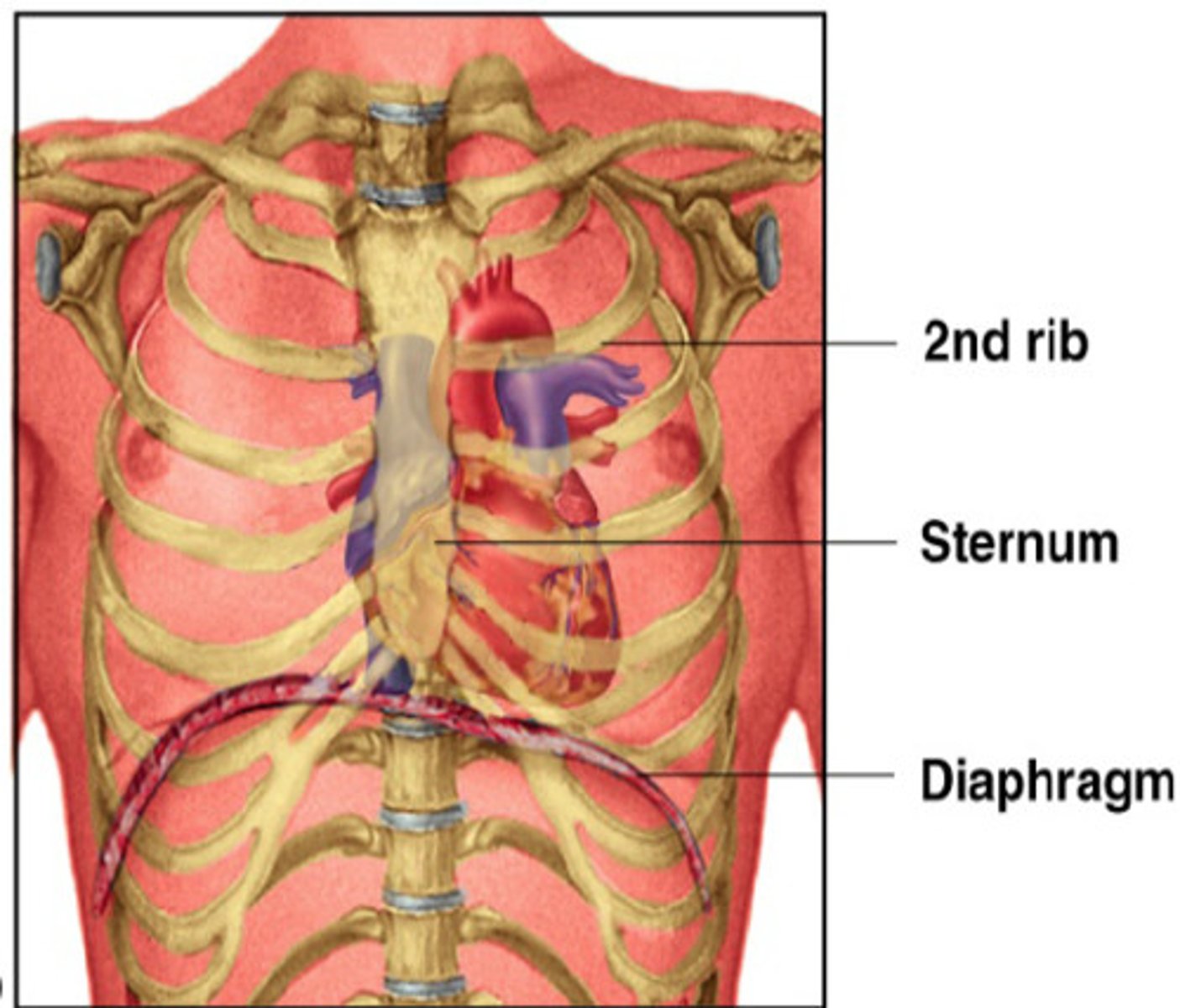
lungs location
thoracic cavity
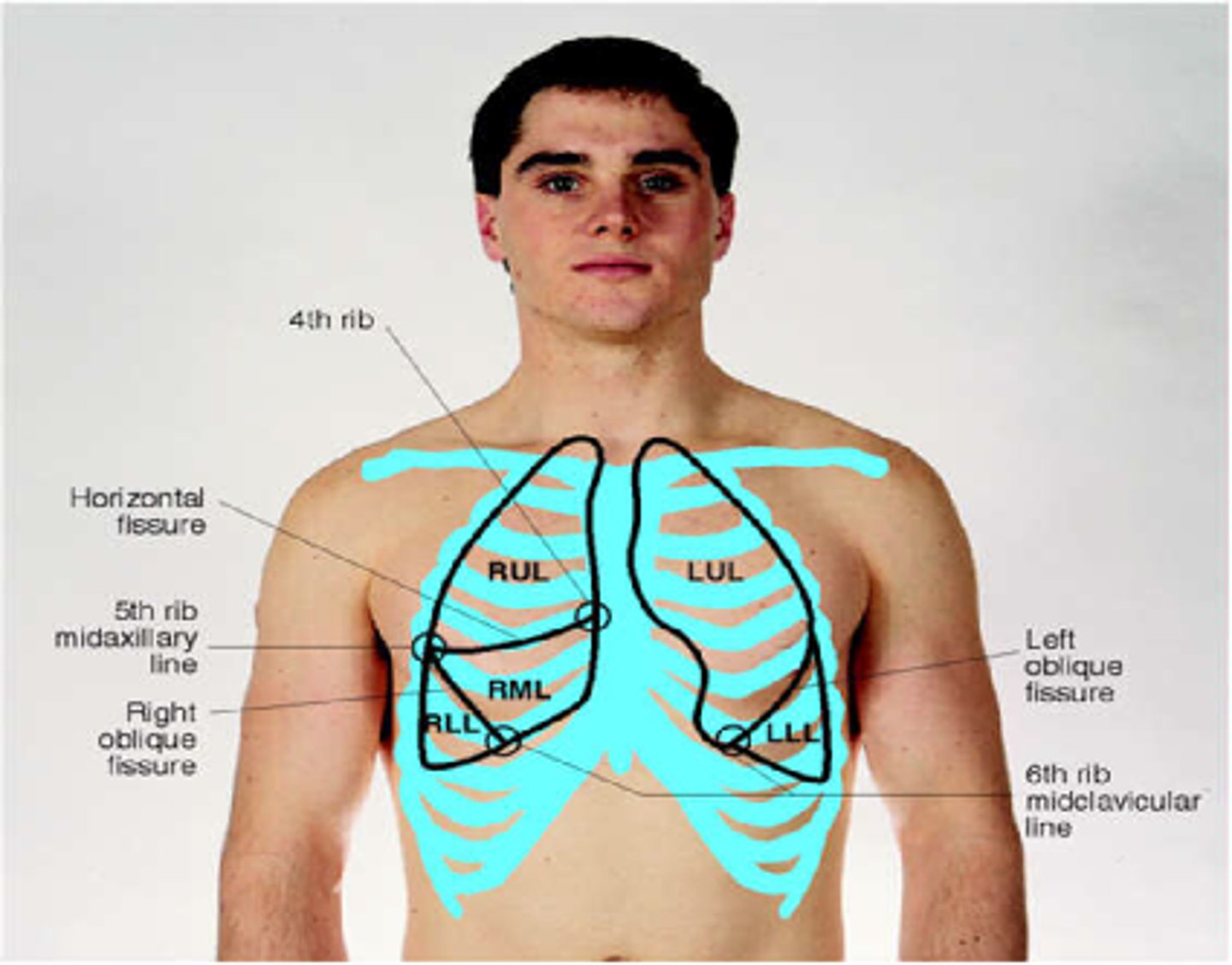
respiratory system is related to what system?
cardiovascular system
pulmonary system
Directs blood flow from the right ventricle of heart to the lungs where it is oxygenated and returns to left atrium
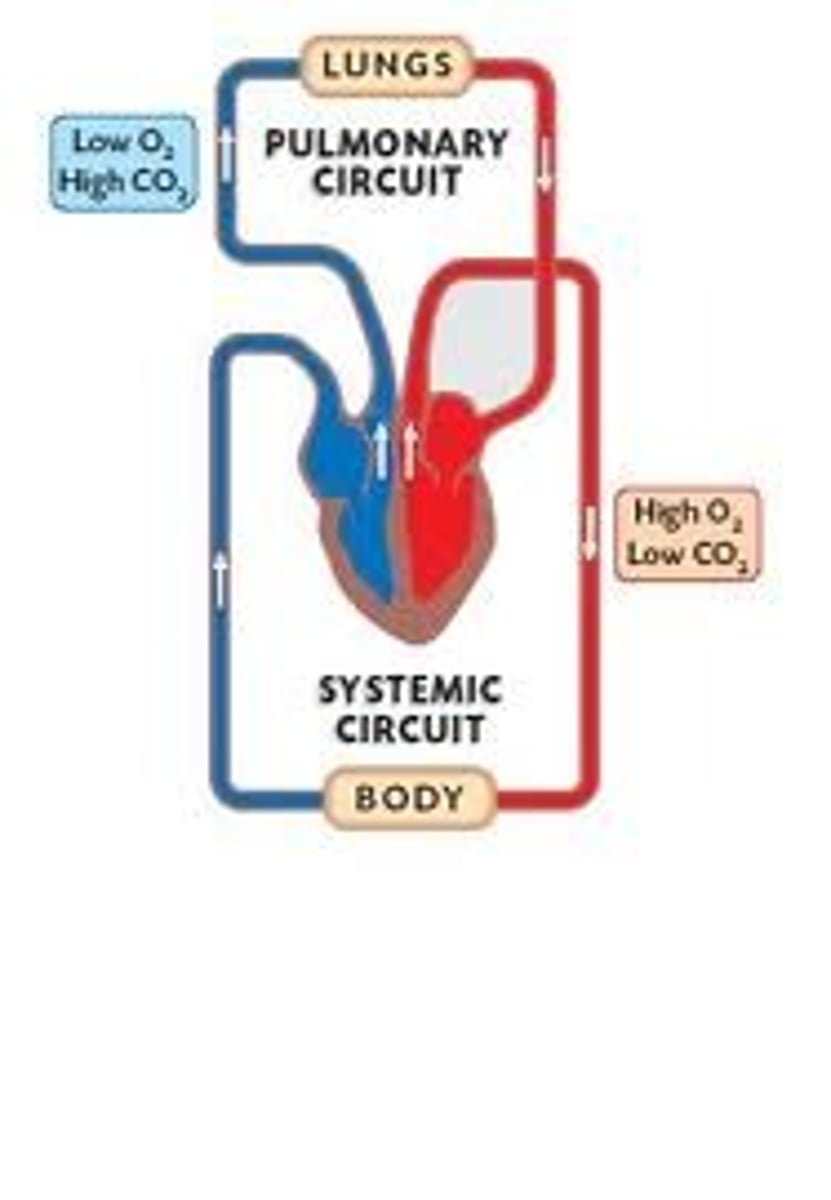
muscle
fibrous tissue that produces force and motion to move the body or produce movement in parts of the body
tidal volume
The amount of air breathed in a normal inhalation or exhalation

asthma
A lung disease characterized by inflamed, narrowed airways and difficulty breathing
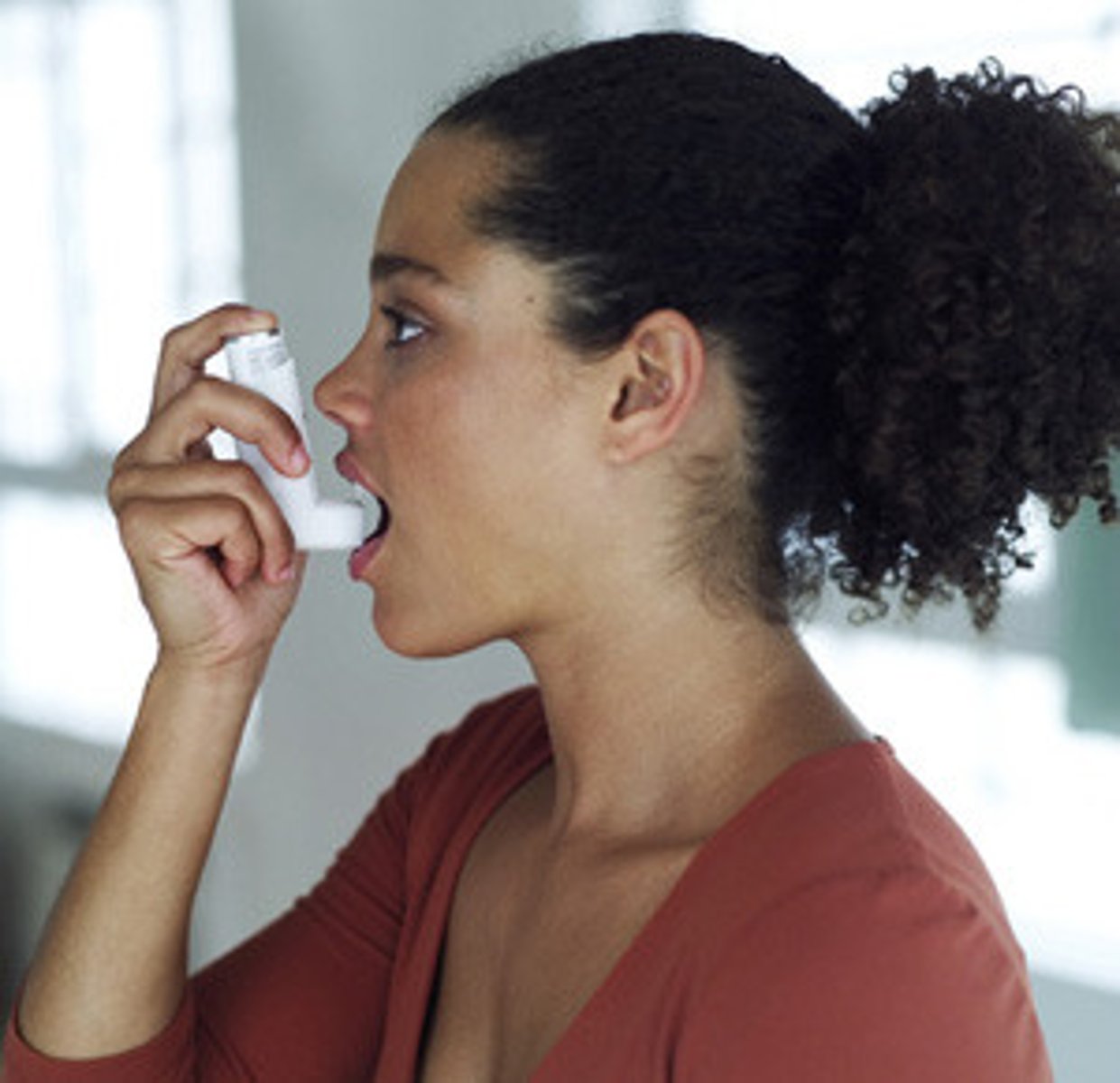
inflammation
the resulting redness, swelling, heat, and pain in an area of defense by innate immunity
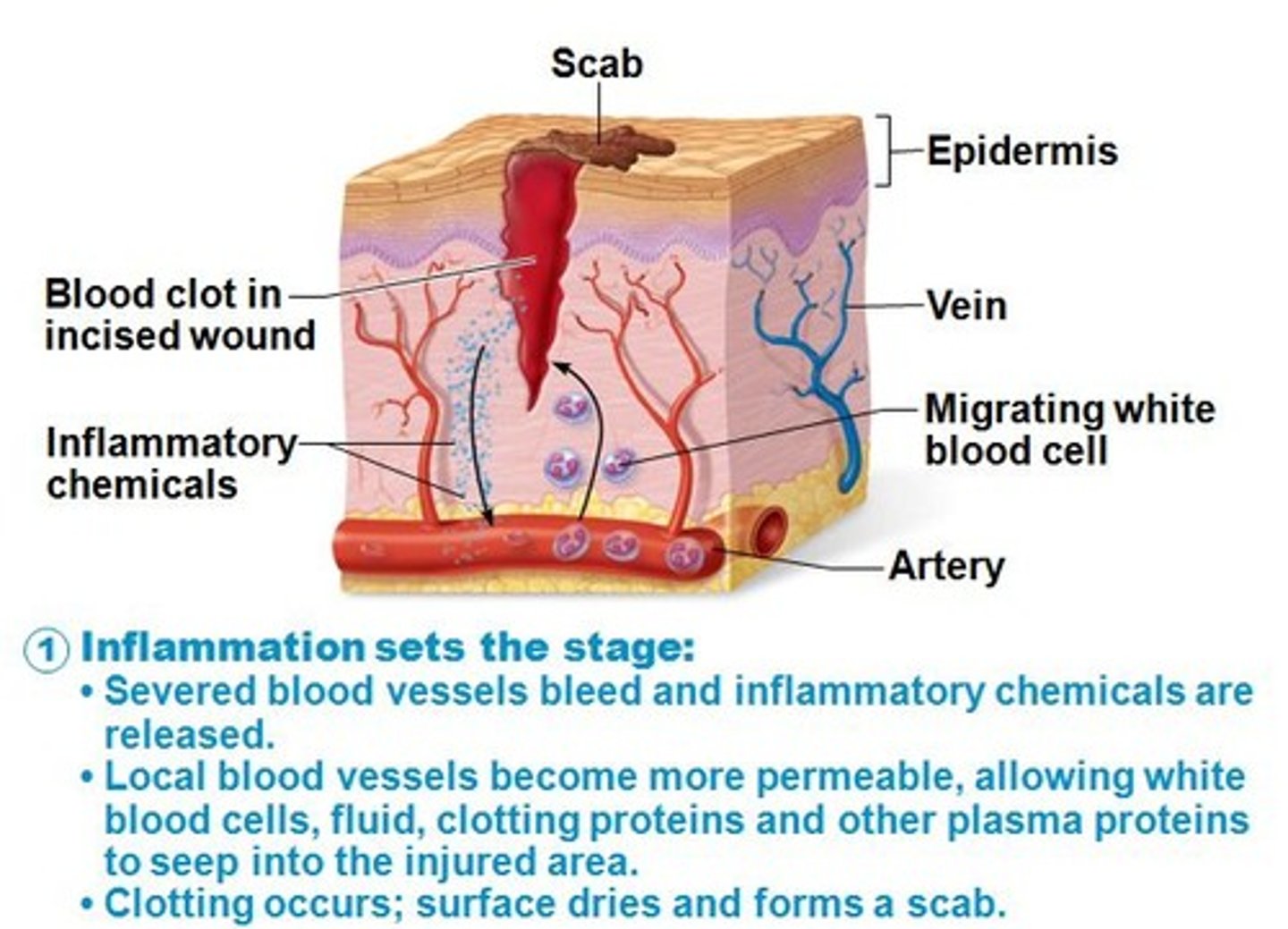
allergies
an immune response to a foreign agent that is not a pathogen
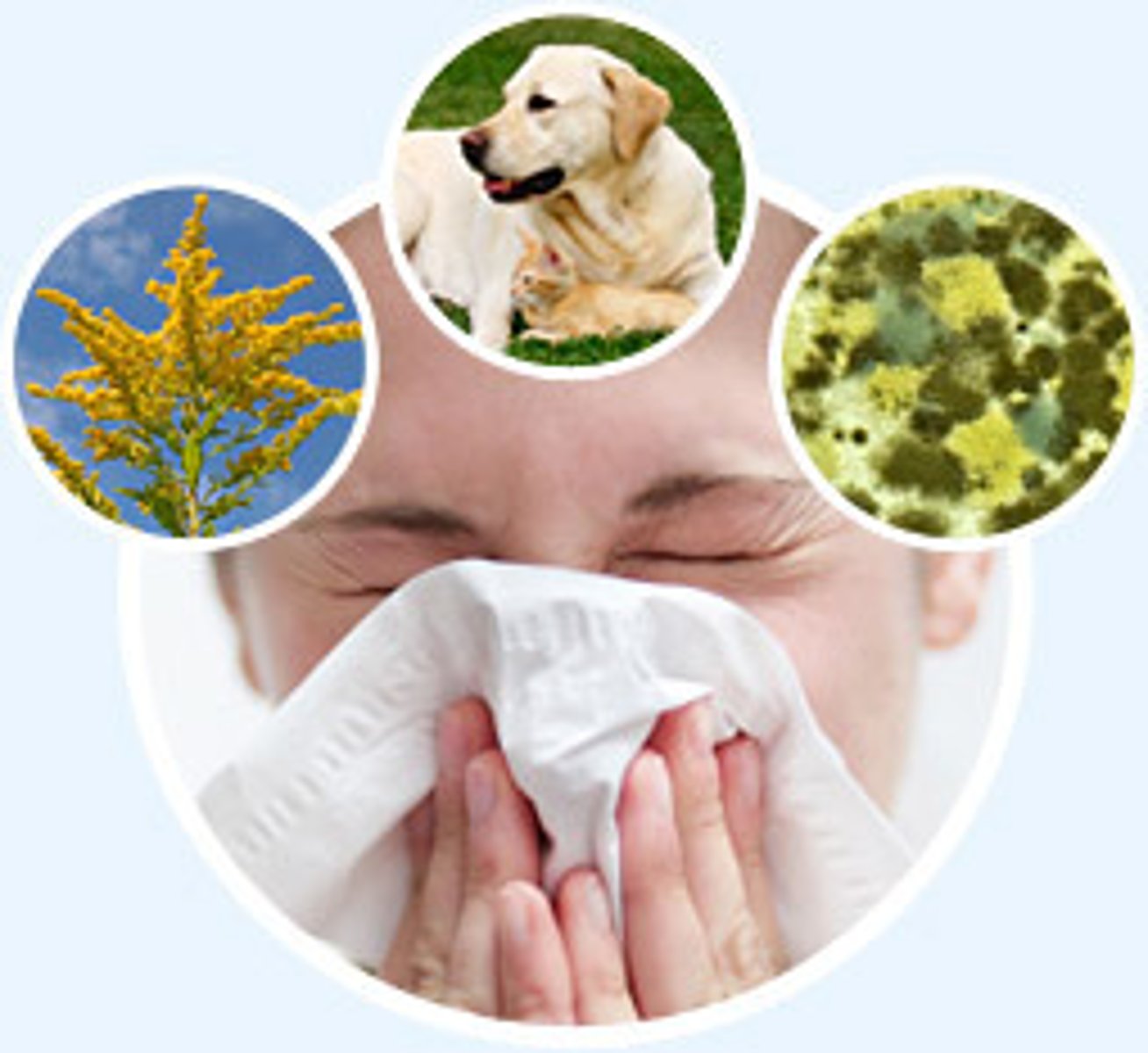
disease
a condition that deteriorates the normal functioning of the cells, tissues, and/or organs
virus
a noncellular entity that consists of a nucleic acid core (DNA or RNA) surrounded by a protein coat.
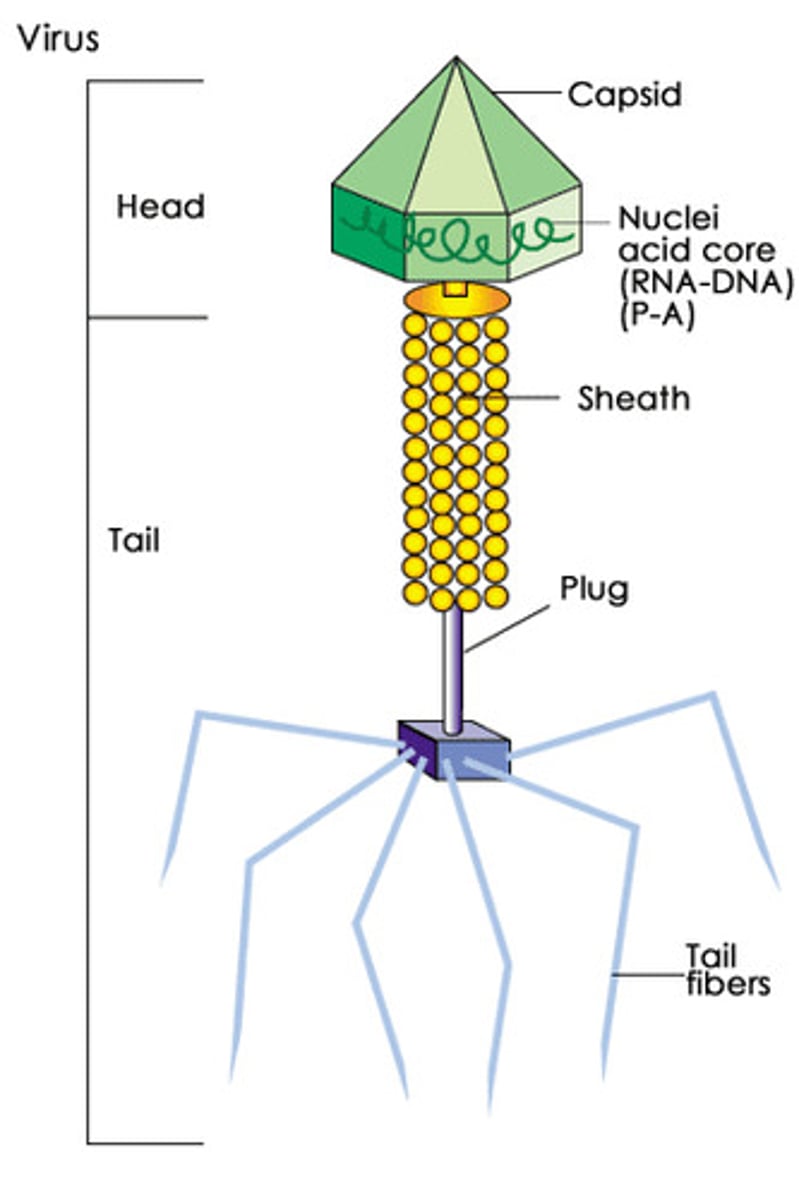
immune system
a system that protects the body from disease-causing agents known as pathogens by responding to substances on the surfaces of agents that the body perceives as foreign
